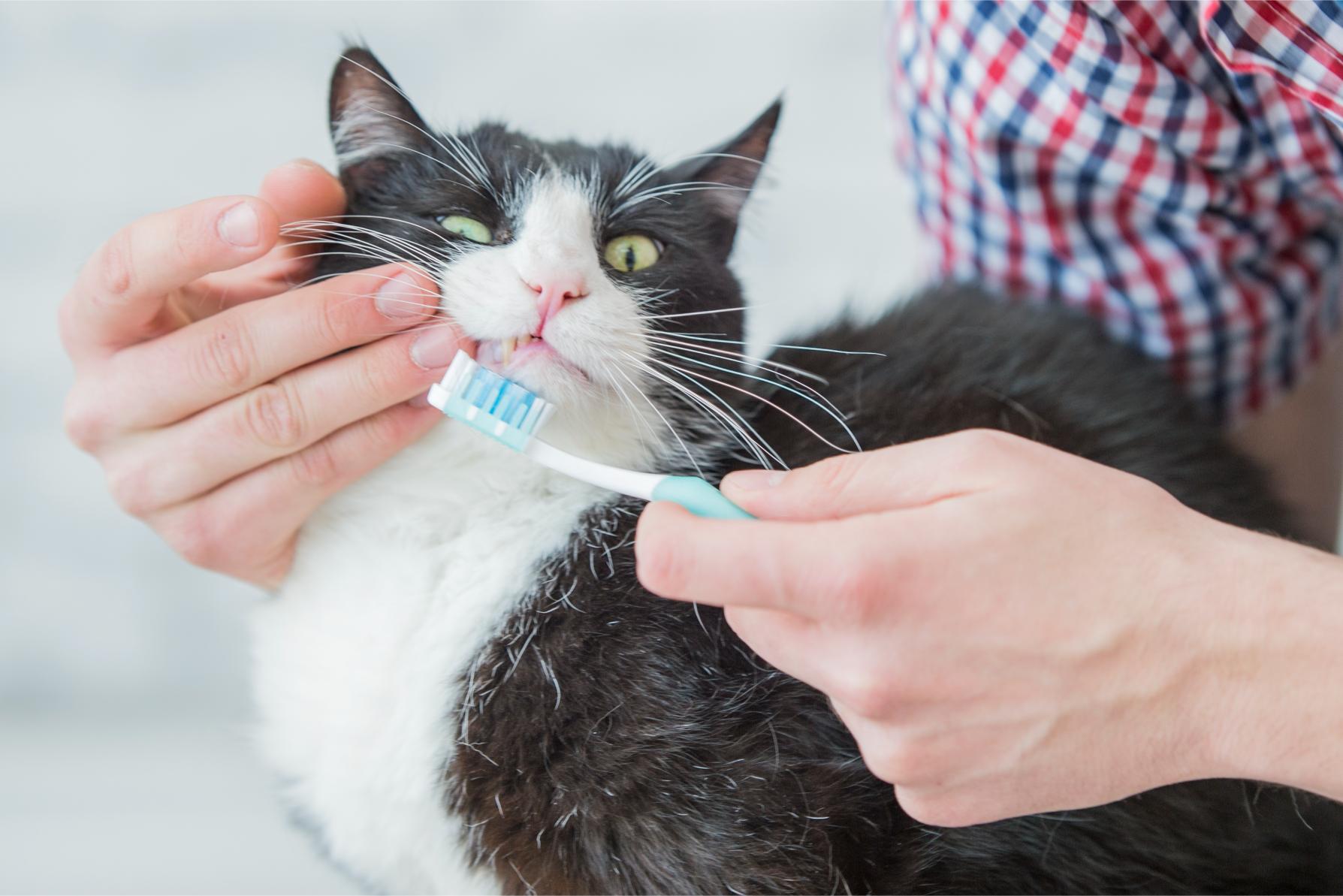Ensuring Your Pet’s Dental Well-Being: A Guide to Oral Hygiene

Even in this rapidly changing world, the impact of our choices can be measured. Combined, each decision, no matter how small, has the potential to affect every detail of our lives and the lives of others. If you’ve ever wondered why pet dental health is such a big deal, it’s because excellent oral hygiene can influence a pet’s day-to-day well-being, save them a lot of pain, and even add years to their life!
A Cumulative Effort
It’s easy to take for granted the pearly whites of a young cat or dog. However, a majority of pets older than age 3 have some form of periodontal disease. This may not seem worrisome, but considering bad breath, or halitosis, is usually the first sign of periodontal disease, it’s time to take dental care seriously.
Leveling the Playing Field
One reason we recommend routine wellness exams every 6-12 months (depending on age, lifestyle, and medical history) is to check a pet’s teeth and gums. Many pets object to dental exams, which is why the safest option is to examine the teeth and gums under general anesthesia. Digital radiography also reveals the possible extent of gum disease and the exact location of any cracked or broken teeth.
Squeaky Clean
Thorough scaling and polishing of the teeth keeps them healthy and clean for another 12 months (with supportive dental care practices at home). Sometimes extractions are necessary to protect their health. Most pets fully recover from extractions with certain dietary modifications (converting to wet/canned food instead of hard, crunchy kibble).
Pet Dental Hygiene Tips
In between routine wellness exams and regular cleanings under anesthesia, pet owners can brush their pet’s teeth at home. Not every pet welcomes this experience, but time, patience, and persistence will eventually pay off. Tooth brushing not only reduces the cost of dental treatments, excellent oral hygiene can increase life expectancy as well.
Slow and Steady Wins the Race
Invest in a few pet toothbrushes to find one that your puppet seems to prefer. There are finger brushes, multi-size brush heads, and different styles to choose from. Pet-specific toothpaste makes the experience more palatable for pets. Never use human toothpaste for use in pets.
Add toothbrushing to your pet’s daily routine, such as directly following a workout or vigorous play time. Let them get used to the toothbrush and the smell/taste of the toothpaste, inviting them to sniff and taste it. Provide lots of praise, gentle handling techniques, and some tasty treats to help them build a positive association.
- Gently insert the toothbrush into the mouth, paying close attention to the back molars.
- Move the brush around in small circles along the front and back side of each tooth.
- Keep sessions short and upbeat, never force them to endure the experience.
- Aim for a daily effort, but rest assured that brushing 2-3 times a week can have a positive impact on a pet’s health.
If you have additional questions about the balance between professional pet dental care and best practices at home, please call us at (916) 939‑1705. Our veterinarians are always here to help at MarketPlace Veterinary Hospital.

